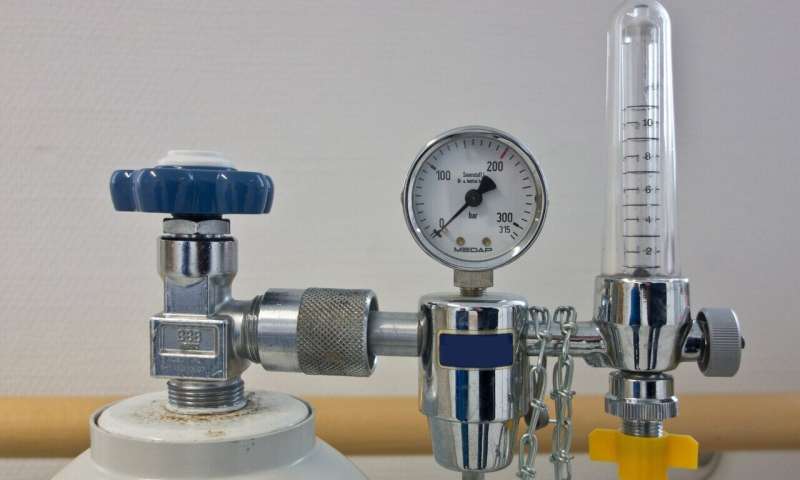An explanation for the lack of blood oxygenation detected in many COVID-19 patients

One of the physiopathological characteristics of COVID-19 that has most baffled the scientific and medical community is what is known as “silent hypoxemia,” or “happy hypoxia.” Patients suffering this phenomenon, the causes of which are still unknown, have severe pneumonia with markedly decreased arterial blood oxygen levels (known as hypoxemia). However, they do not report dyspnea (subjective feeling of shortness of breath) or increased breathing rates, which are usually characteristic symptoms of people with hypoxemia from pneumonia or any other cause.
Patients with “silent hypoxemia” often suffer a sudden imbalance, reaching a critical state that can be fatal. Normally, individuals (healthy or sick) with hypoxemia report a feeling of shortness of breath and a higher breathing rate, thus increasing the body’s uptake of oxygen. This reflex mechanism depends on the carotid bodies. These small organs, located on either side of the neck next to the carotid artery, detect the drop in blood oxygen and send signals to the brain to stimulate the respiratory centre.
A group of researchers from the Seville Institute of Biomedicine—IBiS/University Hospitals Virgen del Rocío y Macarena/CSIC/University of Seville, led by Dr. Javier Villadiego, Dr. Juan José Toledo-Aral and Dr. José López-Barneo, specialists in the physiopathological study of the carotid body, have suggested in the journal Function that “silent hypoxemia” in COVID-19 cases could be caused by the carotid body being infected by the coronavirus (SARS-CoV-2).
Source: Read Full Article
